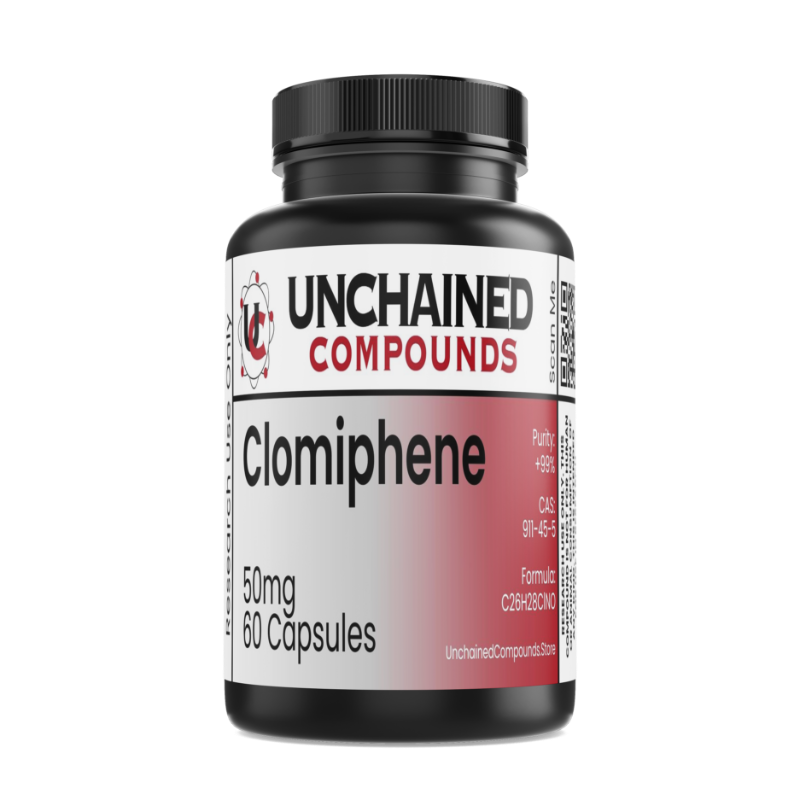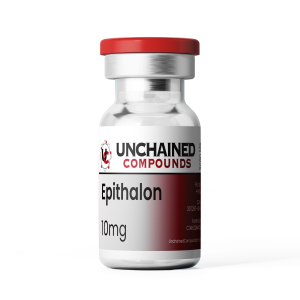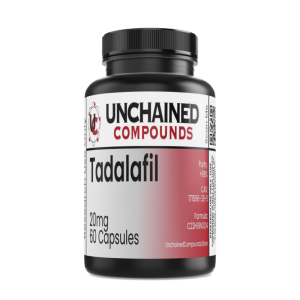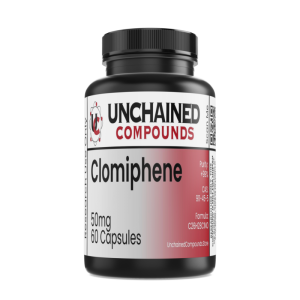Description

50mg/caps and 60 capsules
Minimize open air exposure, store in a cool dry place
Research Studies
Clomiphene citrate therapy for male infertility
Abstract
We have summarized 697 reported cases of the use of clomiphene citrate for the improvement of semen quality. Basal levels of gonadotropins are useful criteria for the differential diagnosis of hypo- and hypergonadotropic hypogonadism. Patients with an intact hypothalamic-pituitary-gonadal axis are most likely to respond to clomiphene citrate. Twenty-five mg. per day, administered in a cyclic fashion for a period of six to nine months, caused the greatest improvement. A higher dose (50 mg. per day) may be effective in men who do not respond to 25 mg. During the course of therapy gonadotropin levels and semen samples should be analyzed periodically. This drug is not currently approved for use in men; the incidence of side effects, particularly with long-term treatment, is unknown.
Abstract
Objective: To determine the ovulation rate after ovulation induction with clomiphene citrate (CC) in women who had previously been ovulatory after a stair-step (CC-SS) ovulation induction.
Design: Retrospective cohort.
Setting: University-based tertiary fertility center.
Patient(s): 61 anovulatory patients <40 years of age with polycystic ovary syndrome who underwent ovulation induction with a CC-SS protocol and a subsequent CC cycle.
Intervention(s): Ovulation induction with CC.
Main outcome measure(s): Ovulation rates and cycle characteristics.
Result(s): Of 61 patients who underwent a subsequent CC cycle, 15 (25%) failed to ovulate at the previously ovulatory dose. Of those 15 patients, 13 (86.7%) ovulated after an increase in dose. The total number of follicles ≥15 mm (2.8 ± 1.2 vs. 1.6 ± 0.7) and peak estradiol (E2) levels (604 ± 272 pg/mL vs. 447 ± 218 pg/mL) were statistically significantly higher in the CC-SS cycle compared with the subsequent CC cycle, respectively. The endometrial lining was statistically significantly thinner in the CC-SS than the CC cycle (7.8 ± 1.8 vs. 9.2 ± 2.7, respectively).
Conclusion(s): The majority of patients who ovulate after a CC-SS protocol will ovulate after taking the previously ovulatory CC dose in a subsequent cycle. Those who do not ovulate will likely ovulate with a further increase in CC dose.
Keywords: Anovulation; clomiphene citrate; ovulation induction; polycystic ovary syndrome; stair-step protocol.
Abstract
Objectives: To examine the intra-cycle and inter-cycle hormonal changes in the clomiphene citrate (CC) cycle in women with unexplained infertility; and to determine the factors that may predict follicle development or CC failure.
Study design: Descriptive study.
Place and duration of study: This study was conducted at the Bagcilar Training and Research Hospital, Istanbul, Turkey from August 2019 to March 2020.
Methodology: Fifty-two women with unexplained infertility were included. Fifty-two cycles given 50 mg of CC but without follicle development were accepted as Group I. In the next cycle, 48 cycles given 100 mg of CC were accepted as Group II. During every cycle, serum hormone (FSH, LH, E2, P4, A4, DHEA‑S, T, 17‑OHP) levels were measured on days 2, 3, 4 or 5 of the cycle (basal day), and on the days when the leading follicle was triggered (trigger day). Endogenous hormone changes were compared in both the groups with and without follicle development as well as in those who could conceive and those who could not conceive.
Results: Basal day FSH and DHEA‑S values were found to be statistically significantly higher in women with follicle development than those without follicle development (p = 0.02 and p = 0.039, respectively). The trigger day FSH value was found to be significantly lower in women who conceived compared to the basal day value (p = 0.004). The relatively high P4 value (p = 0.008) on the basal day (contingent upon it was not exceeding the 0.5 ng/mL threshold) and the low FSH value (p = 0.015) on the trigger day were found to be statistically significantly different in women who had conceived compared to those who had not.
Conclusion: Basal serum FSH, P4 and DHEA‑S levels can be used as predictors of ovulation in CC cycles in women with unexplained infertility by determining a threshold value with more comprehensive studies to be conducted in the future. Key Words: Androgens, Ovarian stimulation, Clomiphene citrate, Unexplained infertility, Induction of ovulation, Prediction.
Disclaimer
The information provided above is not intended to substitute medical advice, diagnosis, or treatment. Should you have any questions regarding a medical condition, seek the advice of your physician or a qualified healthcare provider. In no case should medical advice be disregarded or delayed because of what you have read or seen. We bear no responsibility or liability for your use of any of our research compounds and products. Please note that they are being sold for research purposes ONLY. We do NOT condone any personal use.
NOTE: In some cases wherein the assigned top colors are out of stock, a different top color will be used to ensure that your order will not be delayed. Should you need assistance identifying the peptide vial that you received, please send us an email at support@unchainedcompounds.store
ALL ARTICLES AND PRODUCT INFORMATION PROVIDED ON THIS WEBSITE ARE FOR INFORMATIONAL AND EDUCATIONAL PURPOSES ONLY.
The products offered on this website are intended for in-vitro studies only. In-vitro studies (Latin: “in glass”) are performed outside the body. These products are not medicines or drugs and have not been approved by the FDA to prevent, treat, or cure any medical condition, ailment, or disease. Bodily introduction of any kind into humans or animals is strictly forbidden by law.







